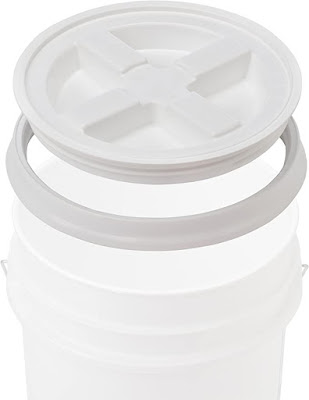Today I'm looking through No-Fail Flower Garden: How to Plan, Plant, and Grow a Beautiful Easy-Care Garden, edited by Joan Benjamin and Barbara W. Ellis (Rodale Press; Emmaus, Pennsylvania, 1994). I'm looking for inspiration for our upcoming landscaping project. The book is from my mom's library (part of her downsizing efforts), and I'm the lucky recipient. As always, I love coming across her notes in the margin, and her bookmarks (such as the one left in the section called A Hardy Northern Garden and another in Add Appeal with Varied Textures). My folks used the book to design several garden beds in their Southeastern Alaska landscape, and their planning and labor pay off each summer as bulbs and perennials appear as soon as the snow is gone.
The book starts with the question, "What is a No-Fail Flower Garden?" The short answer is that the garden looks great and grows well for you. It should please you, use low-maintenance plants, brighten and improve the landscape, provide color and interest through the seasons, be pest- and disease-free, and cost what you are willing to spend. If it meets your criteria, it is a no-fail garden.
No-Fail Flower Garden is divided into two main sections. Part 1: Designing a No-Fail Flower Garden takes the reader through the process of assessing the site, choosing flowers that are right for you, combining plants, designing your own garden (16 pre-designed gardens are provided for inspiration), and adding hardscape and other touches. They also provide design principles such as scale and proportion, balance, repetition, plant forms, texture, and the warm/hot color palette. Part 2: No-Fail Flower Gardening Techniques educates the reader on planting and propagation, caring for your garden, dealing with pests, and working with the garden through its lifecycle. The back matter provides a plant-by-plant guide for flowers, sources for information and products, recommended reading, the USDA Plant Hardiness Zone Map, and an extensive index.
I like this book's straightforward approach to garden design. It helps the reader accept the benefits and limitations of the garden site, and then plan a garden that works well with it. The book focuses a lot on flowers, but it also emphasizes the need for foliage and for seasonal interest. I like that plants are recommended at the species level (spp.), so that the gardener can choose species that are native to the garden location. I enjoyed looking at the plant groupings for particular situations, such as "Lush Leaves for a Shady Site", "A Mixed Border for All-Season Interest" and "Herbs and Shrubs for Easy Care". The gallery of garden designs was also inspiring, with several favorites that included "Two Native Prairie Gardens", "A Corner Herb Garden", and "A Brilliant Butterfly Garden". Even though we plan to work with professional landscapers, this book gave me a lot of ideas for planning the garden that we want.






























